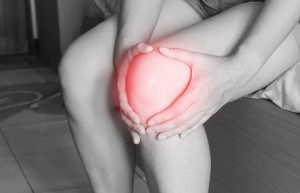If I asked you, “are you stressed?”, how many of you will say “not me”? When I was a lawyer, I wouldn’t think I was stressed out because it was just part and parcel with what I did – I had to handle client demands, I had to put up with micromanagement from my bosses, I had to learn and apply areas of law that were not my specialty area, and I had to learn how to manage people. It was the only life I knew and therefore I just had to put up with it. I knew no other alternative.
Continue ReadingTag: sydneycbd
What causes knee pain? (and no it’s not old age)
One of the common complaints I get from my clients in clinic is in relation to knee pain. The knee pain can be anywhere – on the side of the knee, the back or front of the knee or below the knee. It can also range from just annoying to debilitating. There are a number of non-muscular causes for knee pain including bursitis, arthritis, a cyst in the knee (known as Baker’s cyst) or Osgood-Schlatter’s disease. However, I’m not a doctor or a physiotherapist so this article is really going to focus on the muscular (and structural) causes of knee pain. Muscles directly connected to the knee cap The muscles that attach to the knee cap are the quadriceps (i.e. the quads) – the main muscles at the front of your thigh. From a connective tissue perspective, the iliotibial band (i.e. the ITB, which is situated on the outside of…
Continue ReadingThe art of breathing – properly
Ahhhh breathing… it’s something that is so subtle to our systems and yet is one of the most important aspects of our physical being that we completely take for granted. Take a moment now to notice your breath – are you breathing from your chest or above, or are you breathing from your belly? Most of us breathe from the chest and up. Unfortunately, that’s not how we are designed to breathe. The diaphragm The main muscle of respiration in the body is actually your diaphragm (as a side note, isn’t it funny that the diaphragm’s shape is very similar to the shape of the lungs). So, during inhalation, the diaphragm contracts (i.e flattens out) and pushes down on the abdomen, and during exhalation, it relaxes and the pressure is taken off the abdomen. This means that it’s your belly that should be the main mover during breathing as opposed…
Continue ReadingFascial unwinding – what it is and why it’s great for you
In my massage therapy sessions with clients who are exhibiting neck stiffness or pain, I tend to employ a gentle technique known as fascial unwinding. From experience, fascial unwinding isn’t a technique that most massage therapists use, however I find it to be one of the best tools to loosen up the tension in the body. Fascia – what is it? Fascia is connective tissue that unifies your entire living system. It’s not just the fibrous tissue that surround our muscles (think of the sinewy stuff that we see on steaks) – it’s also in your organs, cells, tissues and the various systems of the body. Given this, it helps to define the structure (construction and shape) of your body. It is also critical to maintaining the tension of various forces within the body, so if one part stretches than it will ensure that its matrix changes elsewhere to compensate…
Continue Reading



